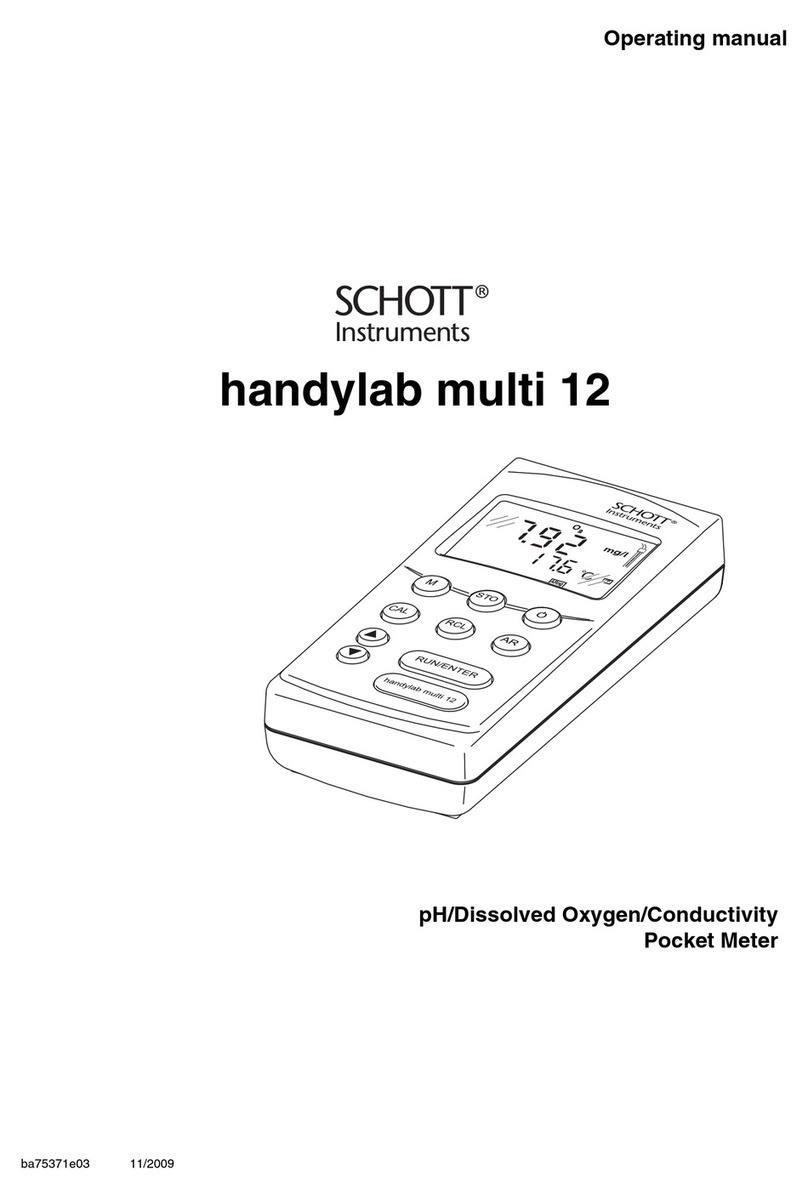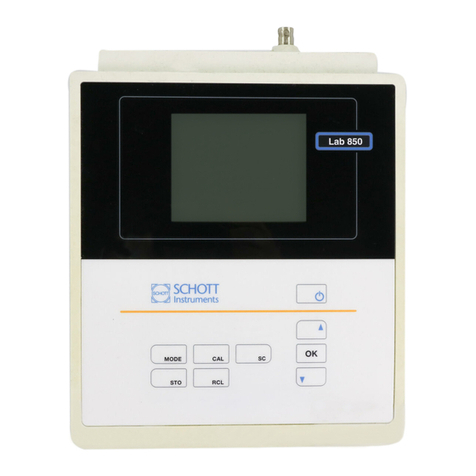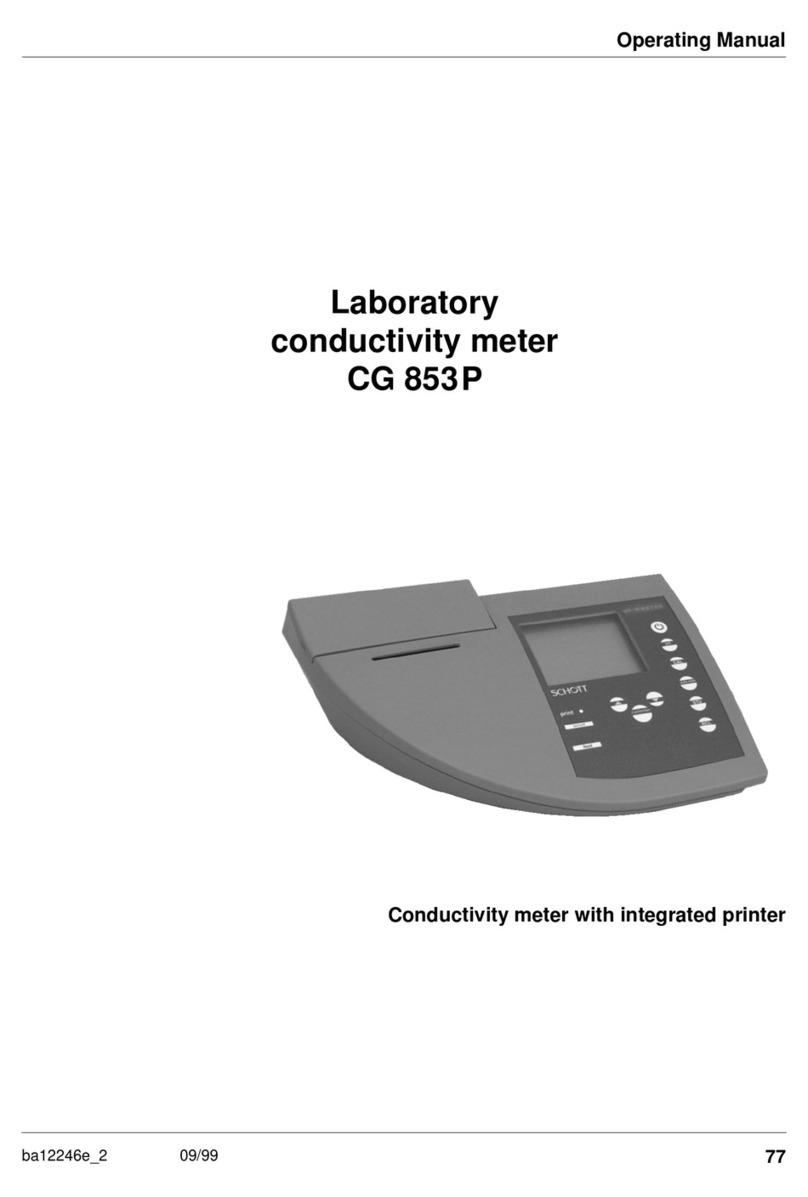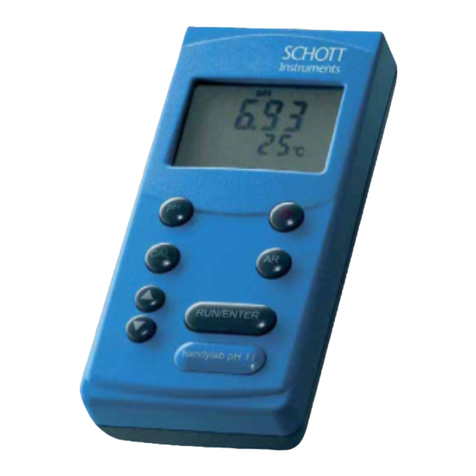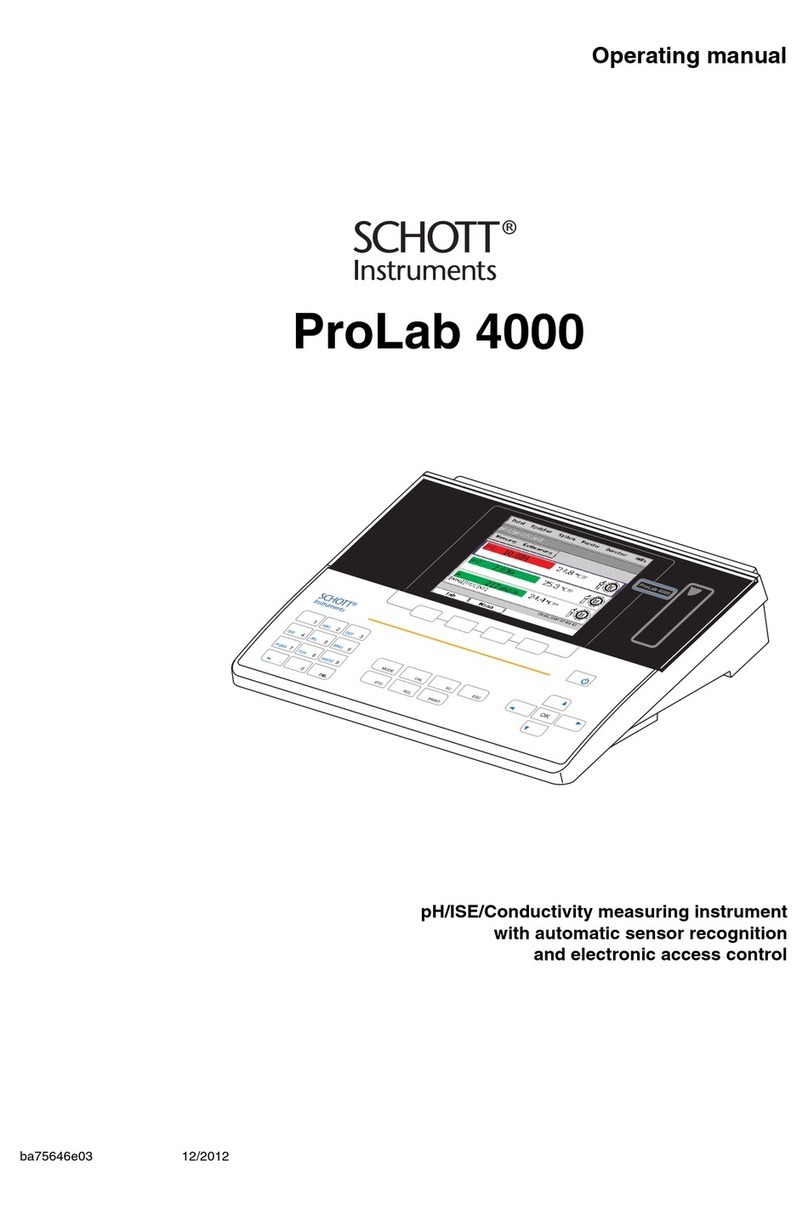
handylab pH 12 List of contents
3
1 Overview . . . . . . . . . . . . . . . . . . . . . . . . . . . . . . . . . . . . . 5
1.1 Keypad . . . . . . . . . . . . . . . . . . . . . . . . . . . . . . . . . . . . . . . 6
1.2 Display . . . . . . . . . . . . . . . . . . . . . . . . . . . . . . . . . . . . . . . 7
1.3 Jack field . . . . . . . . . . . . . . . . . . . . . . . . . . . . . . . . . . . . . 7
1.4 Technical Data . . . . . . . . . . . . . . . . . . . . . . . . . . . . . . . . . 8
2 Safety . . . . . . . . . . . . . . . . . . . . . . . . . . . . . . . . . . . . . . . 11
2.1 Authorized use . . . . . . . . . . . . . . . . . . . . . . . . . . . . . . . . 11
2.2 General safety instructions . . . . . . . . . . . . . . . . . . . . . . . 12
3 Commissioning. . . . . . . . . . . . . . . . . . . . . . . . . . . . . . . 13
3.1 Scope of delivery . . . . . . . . . . . . . . . . . . . . . . . . . . . . . . 13
3.2 Initial commissioning . . . . . . . . . . . . . . . . . . . . . . . . . . . 13
4 Operation. . . . . . . . . . . . . . . . . . . . . . . . . . . . . . . . . . . . 15
4.1 Switching on the measuring instrument . . . . . . . . . . . . . 15
4.2 Measuring . . . . . . . . . . . . . . . . . . . . . . . . . . . . . . . . . . . 16
4.2.1 General information . . . . . . . . . . . . . . . . . . . . . . 16
4.2.2 Measuring the pH value . . . . . . . . . . . . . . . . . . 17
4.2.3 Measuring the ORP voltage . . . . . . . . . . . . . . . 19
4.3 Calibrating . . . . . . . . . . . . . . . . . . . . . . . . . . . . . . . . . . . 20
4.3.1 AutoCal TEC . . . . . . . . . . . . . . . . . . . . . . . . . . . 23
4.3.2 AutoCal DIN . . . . . . . . . . . . . . . . . . . . . . . . . . . 27
4.3.3 ConCal . . . . . . . . . . . . . . . . . . . . . . . . . . . . . . . 31
4.4 Saving . . . . . . . . . . . . . . . . . . . . . . . . . . . . . . . . . . . . . . 34
4.4.1 Saving manually . . . . . . . . . . . . . . . . . . . . . . . . 34
4.4.2 Saving automatically . . . . . . . . . . . . . . . . . . . . . 36
4.4.3 Outputting the data storage . . . . . . . . . . . . . . . . 38
4.4.4 Clearing the memory . . . . . . . . . . . . . . . . . . . . . 43
4.5 Transmitting data . . . . . . . . . . . . . . . . . . . . . . . . . . . . . . 44
4.5.1 Data transmission interval (Int 2) . . . . . . . . . . . 44
4.5.2 Recorder (analog output) . . . . . . . . . . . . . . . . . 46
4.5.3 PC/external printer (RS232 interface) . . . . . . . . 47
4.5.4 Remote control . . . . . . . . . . . . . . . . . . . . . . . . . 47
4.6 Configuration . . . . . . . . . . . . . . . . . . . . . . . . . . . . . . . . . 48
4.7 Reset . . . . . . . . . . . . . . . . . . . . . . . . . . . . . . . . . . . . . . . 51
5 Maintenance, cleaning, disposal. . . . . . . . . . . . . . . . . 53
5.1 Maintenance . . . . . . . . . . . . . . . . . . . . . . . . . . . . . . . . . . 53
5.2 Cleaning . . . . . . . . . . . . . . . . . . . . . . . . . . . . . . . . . . . . . 54
5.3 Disposal . . . . . . . . . . . . . . . . . . . . . . . . . . . . . . . . . . . . . 54
6 What to do if... . . . . . . . . . . . . . . . . . . . . . . . . . . . . . . . . 55












